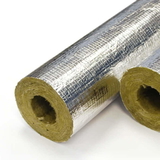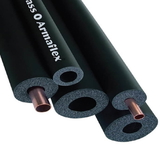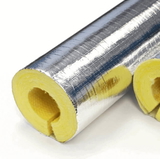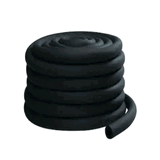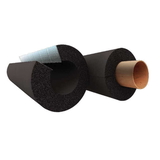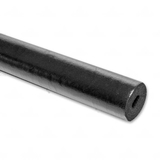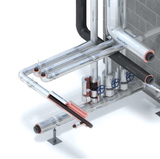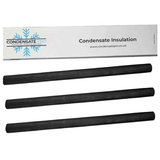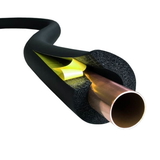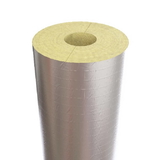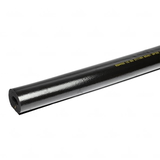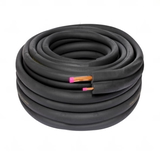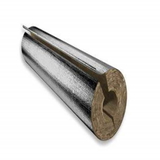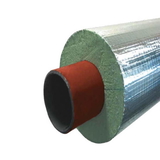- Blogs
- What Is Pipe Lagging? A Short Buyers Guide
What Is Pipe Lagging? A Short Buyers Guide

Pipe lagging is a common way of insulating pipes. Lagging is slang for insulation.
Pipe lagging typically comes in the form of a long section with a hole in the middle the same size as the bore of the pipe. It also has a slit down its length, so it can simply be slipped over the pipe’s exterior.
In many instances, pipe lagging is used as insulation in loft spaces, cellars and garages as these spaces are usually unheated.
This is to prevent the pipes from freezing and central heating pipework to prevent heat loss.
Why do we use pipe lagging?
By preventing cold air from entering pipes and keeping them warm, pipe lagging can protect them from extreme temperature changes.
The following are some of the most common reasons:
By insulating pipes, you can reduce heat loss and prevent pipes from adding to the ambient heat in areas that don't require heating such as loft spaces, garages and cellars.
- Thermal Insulation - The main reason to insulate pipes is the double benefit which is saving money on energy bills whilst also keeping radiators and central heating systems from losing heat, therefore keeping more of the heat concentrated in the radiators where it is required.
- Reduce the carbon footprint of the building due to lower energy consumption. This is achieved by reducing the amount of heat or coolth lost from pipes before the medium reaches its final destination, either a radiator or an air conditioning unit.
- Remove the risk of injuries from people touching hot pipes by accident, scalding them.
- Pipe lagging reduces the risk of pipe ruptures. Copper pipes, for example, can get extremely hot or cold, which can cause a pipe to burst especially in winter if freezing temperatures occur in unheated spaces.
- They also help prevent the growth of bacteria around pipes. This can happen when condensation forms on the outside of cold pipes, which can be a breeding ground for bacteria. Pipe lagging also helps prevent legionnaires disease from forming inside pipework. You can read more about legionnaires disease in our article dedicated to it here
- Acoustic Pipe Insulation is a soundproofing technique for pipes that helps to control and reduce noise. In a variety of applications, it is extremely effective at reducing noise.
- Condensation can be prevented on pipes with proper pipe insulation.
Types of pipe lagging
Different types of pipe lagging can be used for different applications like domestic hot water pipes, sewage pipes and heating systems.
Generally, pipe lagging is made of either foam or mineral wool. The foam material is generally either phenolic, polyethene or nitrile rubber. Mineral wool comprises either glass wool or Rockwool pipe insulation.
The following materials have a foil-faced finish to them, that is to say, that they have a shiny aluminium foil vapour barrier covered across their exterior faces.
- Phenolic Pipe Insulation
- Glasswool Pipe Insulation
- Rockwool Pipe Insulation or Stonewool
This aluminium jacket serves 4 purposes - 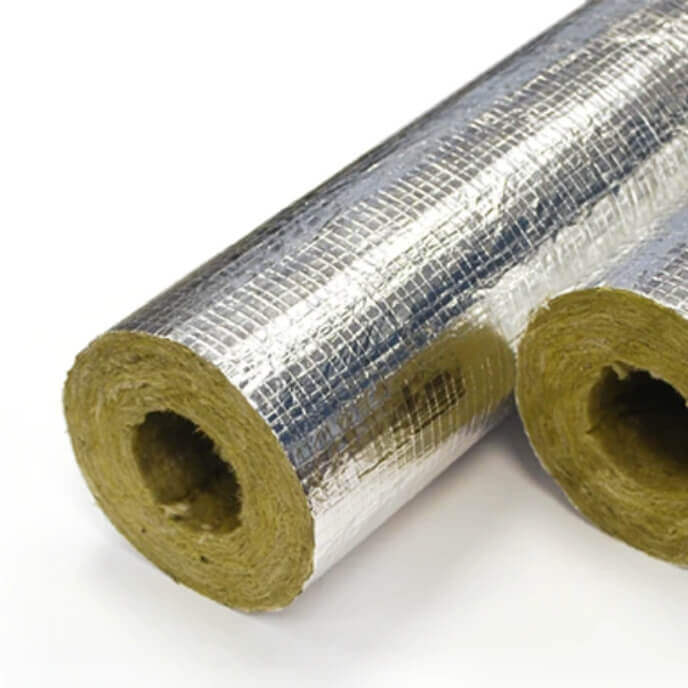
- It reflects radiant heat away and back into the pipe, depending on what purpose the pipe lagging is serving.
- It acts as a vapour barrier, to prevent condensation from forming on cold water pipework
- It helps repel water that is spilt onto the pipe insulation.
- Helps prevent the spread of flame (Class 0) from tearing through the pipe insulation material, potentially igniting other areas and fueling the fire.
You might wonder why the polyethylene and nitrile rubber pipe insulation doesn't have aluminium jackets. That is because these products already have an inherent vapour barrier installed within their material makeup.
They are also very flexible which makes it difficult to put aluminium facings on them which would not allow them to be as flexible as they need to be.
Finally, they are usually a lot cheaper than Phenolic or the Mineral wool pipe insulation because they do not have a foil face, which adds to their cost-effectiveness.
Ultimately pipe insulation needs to be chosen for your project based on the merits of the materials and also the budget.
Generally speaking, the foil-faced pipe insulation sections are much better insulators but are more expensive than Armaflex insulation types, so this needs to be factored into decision making.
All these types of pipe lagging are available in different pipe sizes and wall thicknesses, making it versatile for a range of pipe sizes and applications.
Who are the biggest pipe insulation manufacturers?
We will list the manufacturers based on the material.
Phenolic is also known as Kingspan Pipe Insulation or Kooltherm Pipe Insulation.
It is made by other manufacturers but Kingspan is by far the biggest hence why they are used as a byword for phenolic pipe insulation.
The biggest manufacturer of fibreglass pipe insulation, Isover - Saint Gobain is a French multinational company. Their excellent Climcover pipe insulation is the go-to brand for professional pipe insulation companies.
Danish insulation giant Rockwool makes the majority of the rock wool pipe insulation on the market. Rockwool is not the only pipe insulation manufacturer that uses stone wool. Paroc is another superb choice for those looking to utilise rock wool pipe insulation on their project.
When it comes to nitrile rubber, by far the biggest manufacturer is Armacell. In fact, most people know nitrile rubber by the brand name, Armaflex pipe insulation. However, there are many manufacturers of nitrile rubber lagging, such as K-Flex and Kaiman. All produce quality rubber pipe insulation.
How to Install Pipe Lagging?
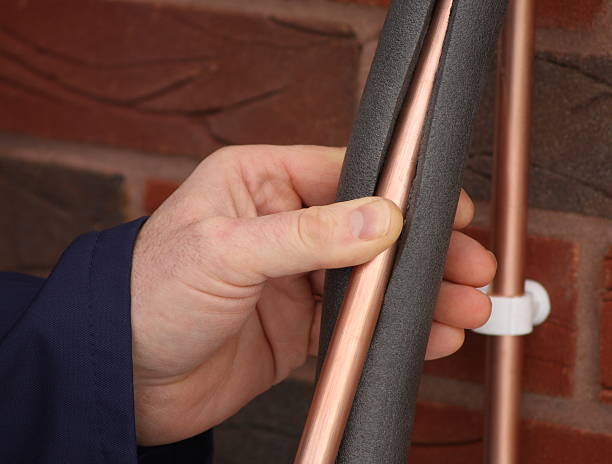 Pipe insulation can be cut easily with a sharp knife. Specialist insulation knives are available but not necessary unless you're going to be doing a lot of pipe lagging.
Pipe insulation can be cut easily with a sharp knife. Specialist insulation knives are available but not necessary unless you're going to be doing a lot of pipe lagging.
For the bends, you can utilise a mitre block, which will help you cut flawless 45 and 90-degree bends.
It’s important to use tape on all joints using the appropriate insulation tape. In the case of the foil-faced pipe insulation you would use aluminium foil tape, most likely 50mm wide and make sure that the insulation is covering the entire length of exposed pipe work.
It is much easier by the way if pipe lagging is installed at the same time as the pipework by your plumber.
Acoustic Pipe Insulation
Acoustic pipe lagging reduces noise in pipes and ductwork. Guardian acoustic pipe lagging is an innovative heavy rubber material which has mineral wool insulation stitched onto it.
Its unique design provides acoustic and thermal properties, and its strong external foil facing provides an additional fire-resistant barrier.
For example, different materials reduce noise at different frequencies. Lower frequency noise in pipes originates from various sources, including flow noise, pumps, and structural vibrations.
Increasing the weight and thickness of pipe lagging reduces noise. This insulation technique is more effective on smaller pipes. Larger pipes require more insulation, and increasing jacket mass has a greater impact on stopping noise.
The material is highly effective for reducing noise and is used in commercial applications. When used correctly, pipe lagging reduces noise and can improve your business’s bottom line.
The Dangers of Asbestos pipe lagging
Asbestos pipe lagging was a type of insulation commonly used in commercial settings. It contains up to 90% asbestos and can be composed of crocidolite (blue) or amosite (brown). The material was often used around pipes, such as those for hot water. These pipe insulations were installed unknowingly for years, and the fibres could be disturbed and suspended.
If you notice any damage to the lagging, you should contact a licensed asbestos removal company for safe and effective removal. This material contains hazardous asbestos minerals and can release fibres into the air, causing lung disease later in life.
Pipe lagging can be easily identified by its appearance, ranging from rope or plaster cast to cotton. If you see a piece of pipe lagging that looks like a rope, you should contact a licensed asbestos removal service.
Asbestos pipe lagging may be hard to spot, but it’s important to know what is it. The most common type of asbestos pipe lagging is fabric-wrapped corrugated insulation. Asbestos pipe lagging can also be a type of hard lagging and may be used on valves, boilers, and water tanks.
However, you should be cautious when approaching these pipes and pipe insulation materials, as disturbing asbestos could release dangerous microscopic fibres. It is important to never approach any asbestos material, whether you suspect it or not. Asbestos pipe lagging is often very dangerous to human health.
In Conclusion:
Pipe insulation brings in a lot of benefits. It prevents critical issues like pipe freezing and bursts whilst also saving energy and money. Insulating pipework is critical in making your building more energy efficient. If you are not sure of the right pipe lagging material for your pipes, drop an email to us or call us and we will be more than happy to help you out.
For superior quality pipe insulation, visit Buy Insulation Online. Along with top-quality pipe lagging, we also store and supply ductwrap, valve covers, Insulation slabs, PIR boards and much more at a low cost.

Samuel Hitch
Managing Director
Buy Insulation Online.
Leave A Reply
Your feedback is greatly appreciated, please comment on our content below. Your email address will not be published. Required fields are marked *
